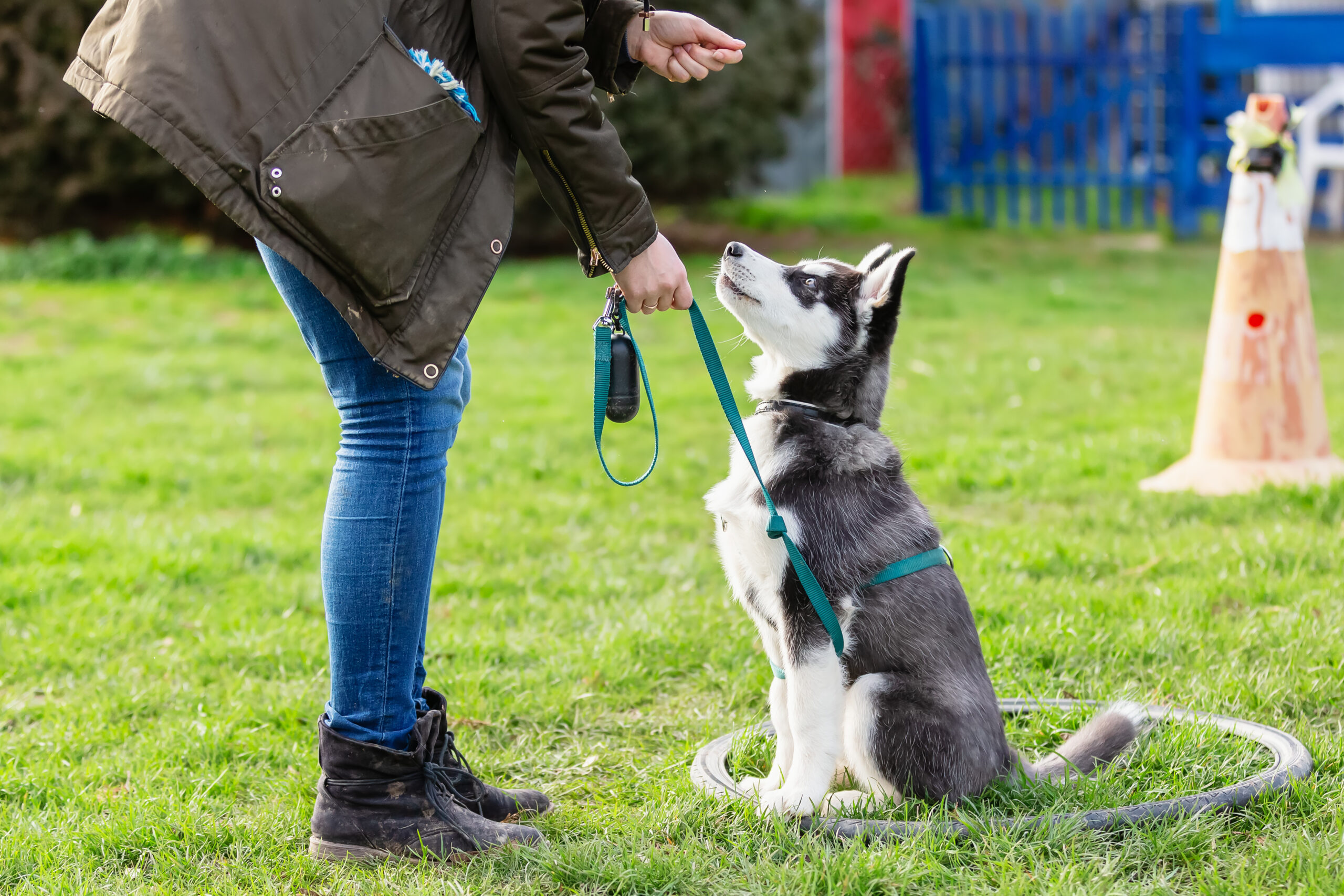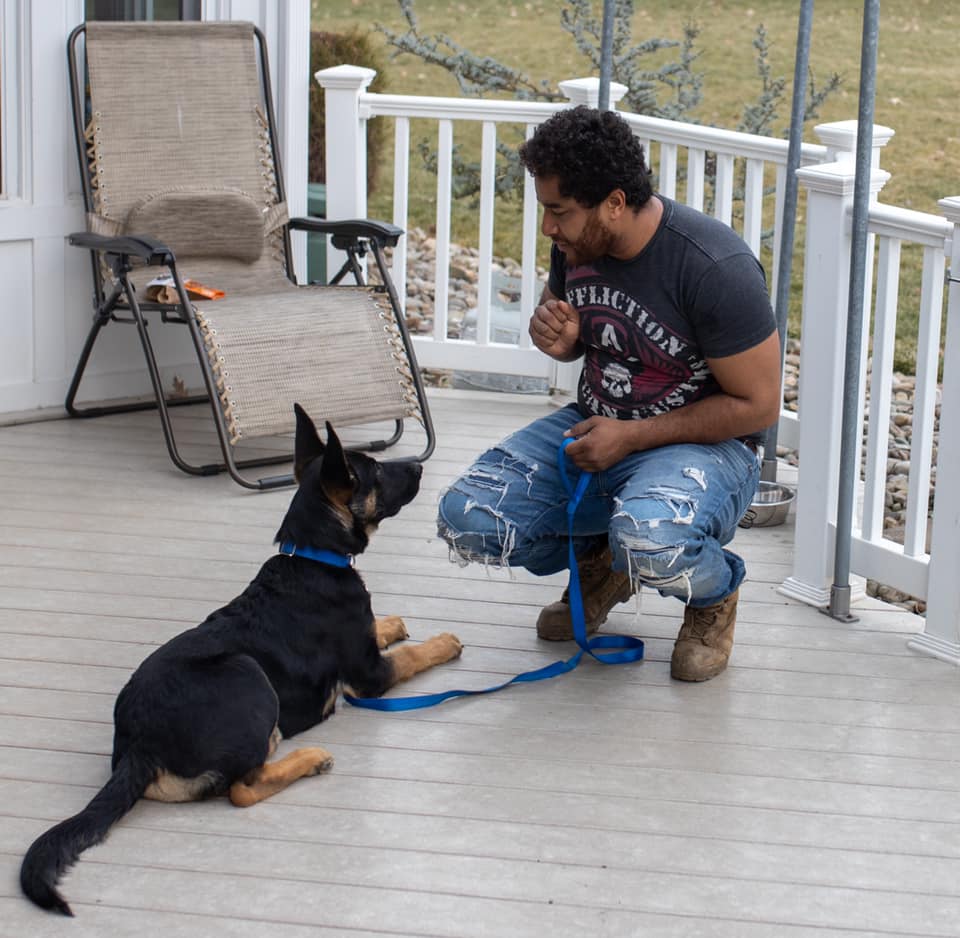Vital Advice for Learning Pet Dog Educating in your home
Understanding pet dog training in your home calls for a strategic approach. Patience, consistency, and positivity are key parts. Developing a routine aids develop a sense of safety and security for the dog. Utilizing positive support builds count on and communication. However, several owners fight with maintaining passion and engagement throughout training sessions. Comprehending how to navigate these challenges can lead to much more reliable training outcomes. What methods might be most advantageous in getting rid of these usual obstacles?
Establish a Constant Routine
When educating a pet, establishing a consistent routine is important for cultivating good behavior and a solid bond in between the owner and pet. A structured timetable supplies dogs with a feeling of safety, assisting them recognize what to expect every day. Routine feeding times, exercise, and training sessions create a predictable environment, which can reduce anxiety and promote a sense of security.
Proprietors must intend to include day-to-day activities at the very same time to enhance this regimen. For instance, early morning walks, play, and training exercises should happen continually. Additionally, including commands and cues during these tasks can even more improve knowing.
Usage Favorable Support
A consistent routine lays the foundation for efficient training, however the approaches utilized during training sessions considerably affect a pet dog's learning experience. Favorable reinforcement becomes a powerful device fit wanted habits. This strategy entails awarding a pet dog for displaying particular activities, successfully encouraging them to duplicate those actions (Dog Training Near Me). Rewards can consist of deals with, appreciation, or playtime, creating a favorable organization with the action executed
Using favorable reinforcement cultivates a bond of trust fund between the dog and fitness instructor, boosting interaction and understanding. It is vital to provide rewards promptly after the wanted actions to strengthen the connection. Consistency in applying this technique assures the canine can plainly connect the behavior with the reward. Additionally, preventing penalty or adverse reinforcement can lead to a more confident and passionate student. By concentrating on favorable support, fitness instructors can develop an encouraging atmosphere where pets thrive and learn successfully.
Keep Training Sessions Short and Enjoyable
Reliable pet training needs maintaining sessions appealing and short to keep the dog's interest and enthusiasm. Normally, sessions need to last no more than 10 to 15 mins, as pet dogs have actually limited interest spans. By concentrating on short periods, instructors can protect against stress for both the handler and the pet, enhancing the discovering experience.
Incorporating play and positive communications right into training can make sessions delightful. Utilizing playthings, deals with, or praise as benefits not only encourages the canine but also reinforces the bond between the family pet and trainer. Altering activities regularly can also aid keep the canine's rate of interest alive, as diverse tasks promote psychological engagement.
Finishing each session on a positive note, such as celebrating a tiny victory, guarantees the dog connects training with enjoyable. Inevitably, maintaining training sessions enjoyable and short promotes effective discovering and reinforces the total training process.
Set Realistic Goals
Establishing reasonable objectives is vital for successful pet training. Trainers ought to begin by assessing their dog's existing skills and behavioral tendencies, allowing them to establish possible goals. For example, as opposed to intending for intricate commands, beginning with standard cues like "rest" or "stay" can promote a feeling of success.
Additionally, breaking down bigger objectives right into smaller sized, workable steps assists keep inspiration for both the canine and the trainer. This technique also enables for modifications along the method, making sure that difficulties do not end up being frustrating.
It is crucial to acknowledge that each dog finds out at its very own pace; patience is vital. Maintaining expectations grounded assists prevent frustration and encourages regular development. Dog Training Near Me. In conclusion, setting reasonable objectives not only improves the training experience however also enhances the bond between the dog and the trainer, bring about an extra reliable and unified training trip
Socialize Your Pet dog
Accomplishing realistic training goals lays the groundwork for a well-shaped pet dog, but socializing plays a considerable duty in a dog's advancement. Socializing a pet dog entails revealing it to numerous environments, individuals, and other animals, which helps to build self-confidence and minimize anxiety. Early socializing, ideally in between three and fourteen weeks of age, is necessary for shaping a pet dog's habits and temperament. This direct exposure enables canines to discover ideal interactions and create crucial social abilities.
Proprietors need to present their pets to different situations progressively, guaranteeing each experience is positive and gratifying. Going to parks, going to puppy classes, or preparing playdates with various other pet dogs can assist in these interactions. Furthermore, observing other dogs and discovering from their habits can further enhance a dog's social skills. Ultimately, favorable and regular socializing cultivates a well-adjusted canine that pleasantly browses various social setups throughout its life.
Hold Your Horses and Relentless

In addition, perseverance is crucial. Normal practice strengthens actions and commands, making certain that the pet dog keeps what has been learned. It's crucial to celebrate tiny victories, as they urge both the proprietor and the pet dog to maintain advancing. Acknowledging setbacks as component of the journey rather than failings can assist preserve inspiration. Inevitably, a person and persistent strategy not only builds a stronger bond between pet dog and proprietor however additionally lays the foundation for effective training and lasting obedience.

Incorporate Training Into Every Day Life
Integrating training into day-to-day live can improve a pet's discovering experience. Regular tasks, such as feeding or strolling, present important possibilities for positive reinforcement. By effortlessly mixing training with daily actions, proprietors can cultivate much better actions in their pets with time.
Daily Routine Combination
How can dog owners perfectly blend training right into their everyday routines? By incorporating training sessions right into daily tasks, owners can improve their pet's knowing experience. Easy commands can be exercised during strolls, such as "rest" before crossing roads or "heel" while maneuvering through parks. Feeding time presents an additional chance; owners can incorporate commands like "wait" or "leave it" before presenting the food dish. In addition, playtime can work as a training ground for commands like "fetch" or "drop it." Uniformity is vital; by installing training right into routine tasks, pet dogs find out that commands matter in numerous contexts. This technique not only reinforces learning however additionally strengthens the bond in between the pet dog and its owner.
Positive Support Opportunities
Training possibilities are plentiful throughout a pet dog's life, especially when incorporated with positive support techniques. Day-to-day activities provide moments for training, such as during walks, feeding times, or play sessions. As an example, rewarding a dog for sitting before receiving food improves obedience while cultivating a favorable organization with commands. Applauding a canine for comfortably greeting visitors reinforces preferable habits. Incorporating training right into playtime, like making use of fetch to exercise commands, can also be effective. Proprietors need to continue to be constant, making use of deals with, praise, or toys as benefits to encourage etiquette. By incorporating training flawlessly into everyday regimens, proprietors can cultivate a well-behaved pet while reinforcing their bond, making the training process enjoyable for both celebrations.
Regularly Asked Concerns
What Age Is Best to Begin Training My Canine?
Establishing the most effective age to start training a canine varies; nonetheless, specialists usually recommend beginning around 8 weeks. Early training cultivates socialization, establishes routines, and assists form favorable habits, advertising a well-adjusted, obedient companion.
How Can I Stop My Dog From Barking Excessively?
To lower excessive barking, one reliable technique includes recognizing triggers, offering regular training commands, and fulfilling quiet behavior. Furthermore, normal exercise and psychological excitement can assist decrease unneeded barking by attending to dullness or anxiety.
What Should I Do if My Pet Ends Up Being Aggressive?
When a dog presents aggressiveness, it is necessary to remain tranquil and prevent battle. Identifying triggers, seeking expert help, and using positive reinforcement methods can efficiently manage and reduce aggressive behavior in dogs.
How Do I Choose the Right Training Devices?
Choosing the best training devices involves reviewing the pet dog's temperament, training, and dimension objectives. Research study different alternatives, article source consult professionals, and focus on humane, effective tools that advertise positive support for an effective training experience.

Can I Train My Dog Without Professional Assistance?
Training a pet dog without specialist help is practical for numerous proprietors. With commitment, patience, and constant practice, individuals can successfully show basic commands and reinforce favorable behaviors, promoting a strong bond in between them and their animal.
A constant routine lays the groundwork for effective training, yet the methods utilized during training sessions substantially affect a dog's learning experience. Effective dog training needs keeping sessions brief and interesting to keep the canine's interest and excitement. Accomplishing reasonable training goals lays the groundwork for an all-round pet, yet socialization plays a significant role in a dog's growth. Furthermore, finding out and observing other pet dogs from their behaviors can additionally improve a canine's social abilities. Selecting the Full Article best training devices involves evaluating the canine's training, size, and personality goals.